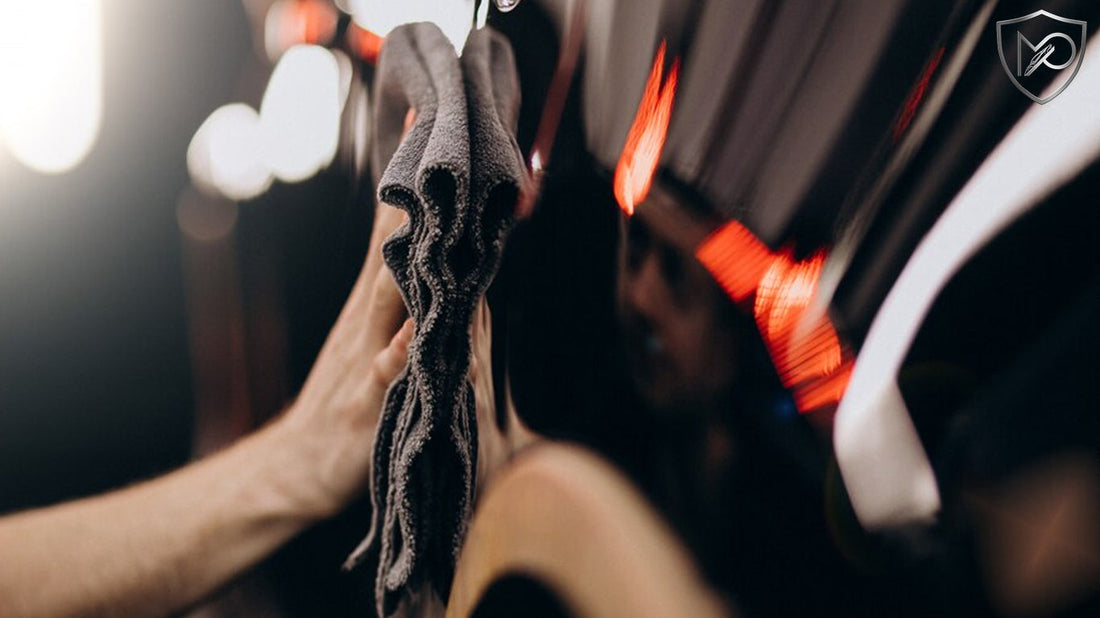Owning a car involves more than just driving it; it requires proper care and maintenance to ensure its longevity and pristine condition. One of the most advanced and effective methods to protect your car's exterior is through the application of ceramic coatings. These coatings have revolutionized the automotive industry, offering a superior alternative to traditional waxing and polishing. In this blog, we will explore what advanced ceramic coatings are, their benefits, and how they can maximize your car's longevity.
What Are Ceramic Coatings?
Ceramic coatings are liquid polymer solutions that chemically bond with the vehicle's factory paint, creating a protective layer. Unlike waxes or sealants, which merely sit on the surface, ceramic coatings form a semi-permanent or permanent bond, providing long-lasting protection. Typically composed of silicon dioxide (SiO2) or titanium dioxide (TiO2), these coatings are applied by hand and cure to form a hydrophobic (water-repellent) surface.

Benefits of Advanced Ceramic Coatings
-
Enhanced Protection :
One of the primary reasons for applying a ceramic coating is the enhanced protection it offers. The coating creates a tough, protective shield that guards the car’s paint against various environmental contaminants such as dirt, bird droppings, tree sap, acid rain, and UV rays. This protective layer helps prevent oxidation and fading, keeping the car’s paint looking new for a longer period.
-
Hydrophobic Properties:
Ceramic coatings are renowned for their hydrophobic properties. Water, along with the dirt and grime it carries, slides off the coated surface effortlessly. This not only keeps the car cleaner for longer but also makes washing and maintenance easier. The hydrophobic effect ensures that water droplets bead up and roll off the surface, reducing water spots and streaks.
-
UV and Oxidation Resistance:
Prolonged exposure to the sun can cause significant damage to a car’s paint. The ultraviolet (UV) rays can lead to oxidation, resulting in a dull and faded appearance. Ceramic coatings provide an additional layer of UV protection, preserving the paint’s original color and gloss. This resistance to UV damage is crucial for maintaining the car’s aesthetic appeal over time.
-
Scratch and Swirl Resistance:
While advanced ceramic coatings are not entirely scratch-proof, they do offer a level of scratch and swirl resistance. The hard, protective layer can withstand minor abrasions and prevent swirl marks that often occur during washing or drying. This added durability helps maintain a flawless finish and reduces the need for frequent polishing.
-
Long-Lasting Gloss and Shine:
A well-applied ceramic coating can significantly enhance the car’s appearance. The coating’s reflective properties add depth and clarity to the paint, resulting in a high-gloss finish that stands out. Unlike waxes, which need reapplication every few months, ceramic coatings can last for years, providing a consistently glossy and shiny look.
-
Cost-Effective in the Long Run:
Although the initial cost of applying a ceramic coating may be higher than traditional waxing, it is a cost-effective solution in the long run. The durability and longevity of the coating reduce the need for frequent waxing, polishing, and other paint correction procedures. This not only saves time but also lowers maintenance costs over the vehicle’s lifespan.
How to Apply Ceramic Coatings
Applying professional ceramic coatings requires careful preparation and precision. Here’s a step-by-step guide to the process:
-
Thorough Cleaning:
Before applying the ceramic coating, the car must be meticulously cleaned to remove any dirt, grease, or contaminants. This includes washing the car, decontaminating the paint with a clay bar, and ensuring the surface is completely dry.
-
Paint Correction:
If the car’s paint has any imperfections such as scratches, swirl marks, or oxidation, they need to be corrected. This step involves polishing the paint to achieve a smooth and flawless surface, ensuring the coating adheres properly.
-
Application of the Coating:
The ceramic coating is applied in small sections using a foam applicator. It is crucial to follow the manufacturer’s instructions regarding application techniques, curing times, and environmental conditions. The coating should be applied evenly and allowed to bond with the paint.
-
Curing Time:
After application, the coating needs time to cure and harden. This period can vary depending on the product and environmental factors. It is essential to keep the car away from water and contaminants during the curing process.
-
Final Inspection:
Once the coating has cured, a final inspection is conducted to ensure even coverage and a flawless finish. Any high spots or residues are carefully removed to achieve a smooth and glossy surface.
Maintaining a Ceramic Coated Car
While ceramic coatings provide excellent protection, proper maintenance is still necessary to maximize their benefits. Here are some tips for maintaining a ceramic coated car:
- Regular Washing: Wash the car regularly using a pH-neutral car shampoo to prevent the buildup of contaminants.
- Avoid Harsh Chemicals: Avoid using harsh chemicals or abrasive cleaning tools that can damage the coating.
- Drying: Always dry the car thoroughly after washing to prevent water spots.
- Periodic Inspections: Conduct periodic inspections to ensure the coating is in good condition and reapply if necessary.
Conclusion
Investing in advanced ceramic coatings is a smart decision for any car owner looking to maximize their vehicle’s longevity and maintain its pristine appearance. The enhanced protection, hydrophobic properties, UV resistance, and long-lasting gloss make ceramic coatings a superior choice compared to traditional methods. By properly applying and maintaining the coating, you can ensure your car stays protected and looks its best for years to come.

